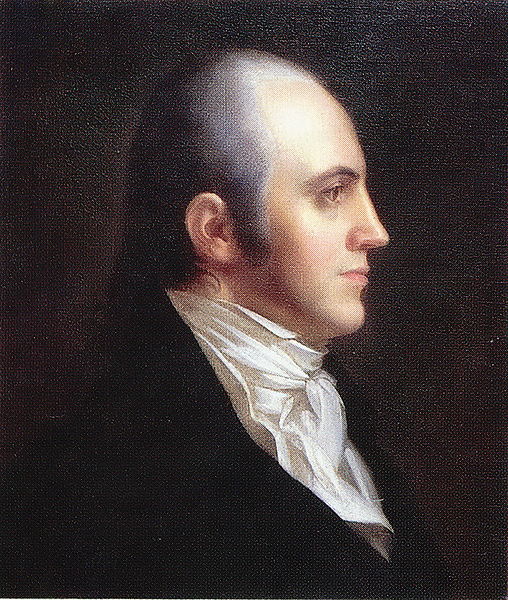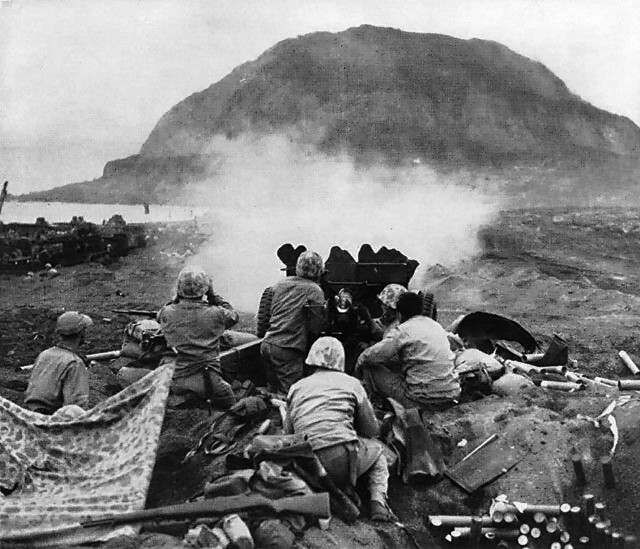This article explores notable events that transpired on February 19th across various periods in history. Ranging from significant battles, groundbreaking inventions, and major political shifts to landmark social movements, these events underscore the day’s historical significance.
By delving into the context and impact of each moment, we gain insights into the rich tapestry of human achievement and evolution marked by this date.
February 19th Events in History
197 – Emperor Septimius Severus defeats usurper Clodius Albinus in the Battle of Lugdunum, the bloodiest battle between Roman armies
This pivotal battle, known as the Battle of Lugdunum (modern Lyon, France), marked a significant turning point in Roman history.
Septimius Severus, after proclaiming himself emperor in 193, faced opposition from Clodius Albinus, who was initially declared Caesar (a title denoting imperial heir) by Severus himself as a political maneuver. Their alliance crumbled, leading to this decisive confrontation.
Also Read: February 18 – On this Day in History
The battle was notably fierce and bloody, resulting in a comprehensive victory for Severus. The aftermath solidified Severus’s hold on the empire and led to the consolidation of his dynasty, albeit through a regime characterized by increased military influence in politics and governance.

1473 – Birth of Nicolaus Copernicus, mathematician and astronomer who formulated a model of the universe that placed the Sun rather than the Earth at its center
Nicolaus Copernicus was born in Toruń, Poland. He later became a mathematician, astronomer, and cleric whose work fundamentally transformed the understanding of the universe. His heliocentric theory, which posited that the Sun, not the Earth, was at the center of the universe, challenged the geocentric views that had dominated for centuries.
Also Read: February 20th Events in History
This theory was detailed in his seminal work, “De revolutionibus orbium coelestium” (On the Revolutions of the Celestial Spheres), published shortly before his death in 1543. Copernicus’s model laid the groundwork for future astronomers, including Galileo and Kepler, significantly influencing the scientific revolution.
1600 – The Peruvian stratovolcano Huaynaputina explodes in the most violent eruption in the recorded history of South America, causing global climatic effects
Located in southern Peru, Huaynaputina underwent one of the most violent volcanic eruptions in South America’s recorded history. The eruption had far-reaching effects, not just locally but globally, affecting climate patterns. It resulted in a volcanic winter, with 1601 recorded as one of the coldest years in history.
This event led to worldwide agricultural anomalies, including crop failures in Russia, which contributed to a period of famine and unrest. The eruption’s impact highlighted the significant global interconnectivity of volcanic events and their climatic consequences.
1674 – England and the Netherlands sign the Treaty of Westminster, ending the Third Anglo-Dutch War
This treaty concluded the Third Anglo-Dutch War (1672–1674), part of the larger Franco-Dutch War. The agreement was significant for several reasons, not least because it marked the end of military conflicts between England and the Netherlands over global trade dominance.
A notable provision of the treaty was the formal cession of New Amsterdam (modern-day New York City) from the Dutch to the English. The city had been captured by the English in 1664, but its fate was officially sealed with this treaty, leading to a lasting English (and subsequently British) presence in North America.
1807 – In Alabama, former Vice President of the United States Aaron Burr is arrested for treason and confined to Fort Stoddert
Aaron Burr, the third Vice President of the United States (1801–1805), was arrested near Wakefield, in present-day Alabama, on charges of treason. Following his infamous duel with Alexander Hamilton in 1804 and the end of his term as vice president, Burr’s ambitions led him to the western frontier.
There, he became involved in a mysterious scheme, which, according to allegations, included plans to establish an independent country in the Southwest or to undertake military adventures against Spanish territories.
Burr’s arrest and subsequent trial, presided over by Chief Justice John Marshall, captivated the nation. Though acquitted due to lack of concrete evidence of treason, Burr’s political career was effectively ended, and he remains a controversial figure in American history.

1846 – In Austin, Texas, the newly formed Texas state government is officially installed
On February 19, 1846, the Republic of Texas ceased to be an independent nation and was officially annexed to the United States of America. This marked a significant moment in Texas history, as the state government was formally installed in Austin, Texas.
This event came after years of conflict and negotiation over the status of Texas, which had declared independence from Mexico in 1836. The annexation process began in 1845, and the transfer of power from the Republic to the state of Texas was a major milestone in the integration of Texas into the United States.
1878 – Thomas Edison patents the phonograph
Thomas Edison’s patenting of the phonograph on February 19, 1878, represents a landmark in the history of technology and music. The phonograph was the first device capable of both recording and reproducing sound.
Unlike its predecessors, which could only play pre-made sounds or music, the phonograph could record sound directly from the environment and play it back. This invention laid the groundwork for the development of sound recording and playback technology, profoundly influencing the music industry, entertainment, and communication.
1941 – World War II: Nearly 250 Japanese warplanes attack the northern Australian city of Darwin causing heavy damage
On February 19, 1942, Darwin, a strategic port and military base in the northern Australian Territory, experienced the first and largest single attack ever mounted by a foreign power on Australia.
Nearly 250 Japanese warplanes targeted the city in a massive air raid, causing significant destruction and loss of life. This attack marked the beginning of a series of air raids across Northern Australia, extending as far south as Townsville in Queensland.
The bombings had a profound impact on Australian defenses and significantly influenced the country’s involvement in World War II.
1942 – World War II: President Franklin D. Roosevelt signs Executive Order 9066, allowing the United States military to relocate Japanese Americans to internment camps
On this day in 1942, amidst the fears and uncertainties of World War II, President Franklin D. Roosevelt signed Executive Order 9066. This order authorized the Secretary of War and military commanders to designate military areas from which any or all persons could be excluded.
This led to the forcible relocation and internment of about 120,000 Japanese Americans, two-thirds of whom were native-born U.S. citizens. The internment camps were a stark violation of civil liberties and are remembered as one of the most egregious instances of racial prejudice and war hysteria in American history.
1943 – World War II: Battle of Kasserine Pass in Tunisia begins
The Battle of Kasserine Pass was the first major engagement between American and Axis forces in the European theater during World War II, taking place in February 1943.
Located in the Atlas Mountains of Tunisia, the battle was part of the Tunisian Campaign and involved a series of attacks and counterattacks between U.S. and German forces.
The inexperienced American troops suffered heavy losses, leading to significant reevaluation and reorganization of the U.S. Army in North Africa. Despite the initial setback, the lessons learned at Kasserine Pass were instrumental in the subsequent successes of the Allied forces in the North African Campaign.

1945 – World War II: Battle of Iwo Jima – about 30,000 United States Marines land on Iwo Jima
The Battle of Iwo Jima, which began on February 19, 1945, stands as one of the most intense and pivotal battles fought between the United States and Japan during World War II.
The U.S. Marine Corps’ goal was to capture the island of Iwo Jima to provide a base for fighter aircraft and an emergency landing site for bombers. This strategic island was heavily fortified by the Japanese, who were deeply entrenched.
The battle is famously remembered for the iconic photograph by Joe Rosenthal of five Marines and a Navy corpsman raising the U.S. flag on Mount Suribachi, symbolizing American perseverance and valor. The battle resulted in significant casualties on both sides and demonstrated the ferocity of Pacific warfare.
1949 – Ezra Pound is awarded the first Bollingen Prize in poetry by the Bollingen Foundation and Yale University
Ezra Pound, a major figure in early modernist poetry, was awarded the inaugural Bollingen Prize in Poetry in 1949. This prize, given by the Bollingen Foundation and administered by the Library of Congress, was established to recognize outstanding American poetry.
Pound’s award was for his work “The Pisan Cantos,” written while he was detained in Pisa, Italy, by American forces during World War II.
The decision to award Pound, who had made pro-Fascist broadcasts during the war, was highly controversial and sparked a widespread debate over the relationship between an artist’s work and their political or moral positions.
1959 – The United Kingdom grants Cyprus independence, which is formally completed on August 16, 1960
On February 19, 1959, an agreement was reached in London for the granting of independence to Cyprus, ending years of conflict and negotiation between Britain (the colonial ruler), Greece, and Turkey.
The independence agreement was a complex compromise that sought to balance the interests of the Greek Cypriot majority and the Turkish Cypriot minority, along with those of Greece, Turkey, and the UK.
The Republic of Cyprus was officially established on August 16, 1960. This transition marked a significant moment in the decolonization process following World War II but also set the stage for future conflicts between the island’s Greek and Turkish communities.
1963 – The publication of Betty Friedan’s The Feminine Mystique reawakens the Feminist Movement in the United States as women’s organizations and consciousness-raising groups spread
“The Feminine Mystique,” published by Betty Friedan on February 19, 1963, is often credited with sparking the second wave of feminism in the United States.
Friedan’s critique of the societal assumption that women could only find fulfillment through homemaking and motherhood struck a chord with many women, leading to a nationwide reevaluation of women’s roles.
The book’s impact was profound, leading to the formation of women’s organizations and consciousness-raising groups that challenged gender inequality and fought for legislative changes. Friedan’s work remains a seminal text in feminist literature and a catalyst for the feminist movement of the 1960s and beyond.
1985 – William J. Schroeder becomes the first recipient of an artificial heart to leave hospital
On February 19, 1985, William J. Schroeder made medical history as the second person to receive a Jarvik-7 artificial heart and the first such recipient to be discharged from the hospital. Schroeder’s operation took place at the Humana Heart Institute in Louisville, Kentucky, and marked a significant milestone in the development and application of artificial organs.
Despite the initial success, Schroeder faced numerous health complications during the 620 days he lived with the device. His experience contributed to ongoing debates about the ethics, costs, and viability of artificial organ transplantation, influencing future research and development in the field.
1986 – The Soviet Union launches its Mir spacecraft. Remaining in orbit for 15 years, it is occupied for ten of those years
On February 19, 1986, the Soviet Union launched the Mir space station, marking a significant achievement in human space exploration.
Mir served as a microgravity research laboratory in which crews conducted experiments in biology, human biology, physics, astronomy, meteorology, and spacecraft systems with a goal of developing technologies required for the permanent occupation of space.
It held the record for the longest continuous human presence in space at the time, serving as a home for various international astronauts and cosmonauts. It played a critical role in the partnership between Russia and the United States, particularly in the Shuttle-Mir Program, paving the way for the International Space Station (ISS).
2001 – The Oklahoma City bombing museum is dedicated at the Oklahoma City National Memorial
The Oklahoma City National Memorial, dedicated on February 19, 2001, honors the victims, survivors, rescuers, and all who were affected by the Oklahoma City bombing on April 19, 1995.
The bombing of the Alfred P. Murrah Federal Building was the deadliest terrorist attack in the United States prior to the September 11 attacks and remains one of the most significant acts of domestic terrorism in the country’s history.
The museum and memorial site provide a poignant tribute to those who lost their lives and serve as a symbol of resilience, unity, and the enduring spirit of the community in the face of tragedy.
2002 – NASA’s Mars Odyssey space probe begins to map the surface of Mars using its thermal emission imaging system
Launched on April 7, 2001, NASA’s Mars Odyssey spacecraft began its mission to map the surface of Mars on February 19, 2002. Equipped with a thermal emission imaging system, Odyssey’s task was to create a detailed map of the Martian surface, identifying the distribution of minerals and the presence of water ice.
This mission provided invaluable data on the Martian climate and geology, significantly advancing our understanding of the planet’s environment and its potential for supporting life.
The Odyssey mission has contributed to numerous discoveries, including evidence of vast amounts of water ice beneath the surface, which has implications for future Mars exploration and the possibility of human colonization.
2003 – An Ilyushin Il-76 military aircraft crashes near Kerman, Iran, killing 275
On February 19, 2003, an Ilyushin Il-76, a Russian-made military aircraft, crashed in the mountainous region near Kerman in southeastern Iran. All 275 passengers and crew aboard were killed, making it one of the deadliest aviation disasters in Iran’s history.
The aircraft was carrying members of the Islamic Revolutionary Guard Corps, a branch of Iran’s Armed Forces, from Zahedan to Kerman when it encountered severe weather conditions, leading to the tragic accident.
This incident highlighted the challenges and risks associated with military aviation in Iran, particularly concerning aging aircraft and adverse weather.
2011 – The first wave of the Egyptian revolution culminates in the resignation of Hosni Mubarak and the transfer of power to the Supreme Council of the Armed Forces
February 19, 2011, marks a pivotal moment in the history of modern Egypt and the Arab Spring. After 18 days of unprecedented mass protests across Egypt, demanding an end to Hosni Mubarak’s 30-year presidency, Mubarak resigned and transferred power to the Supreme Council of the Armed Forces (SCAF).
The protests were part of a larger wave of revolutionary actions across the Arab world, driven by demands for greater democracy, economic reform, and political freedoms.
Mubarak’s resignation was a landmark victory for the Egyptian revolutionaries and marked the beginning of a challenging transition period, as Egypt grappled with the complex process of building a new democratic system.
